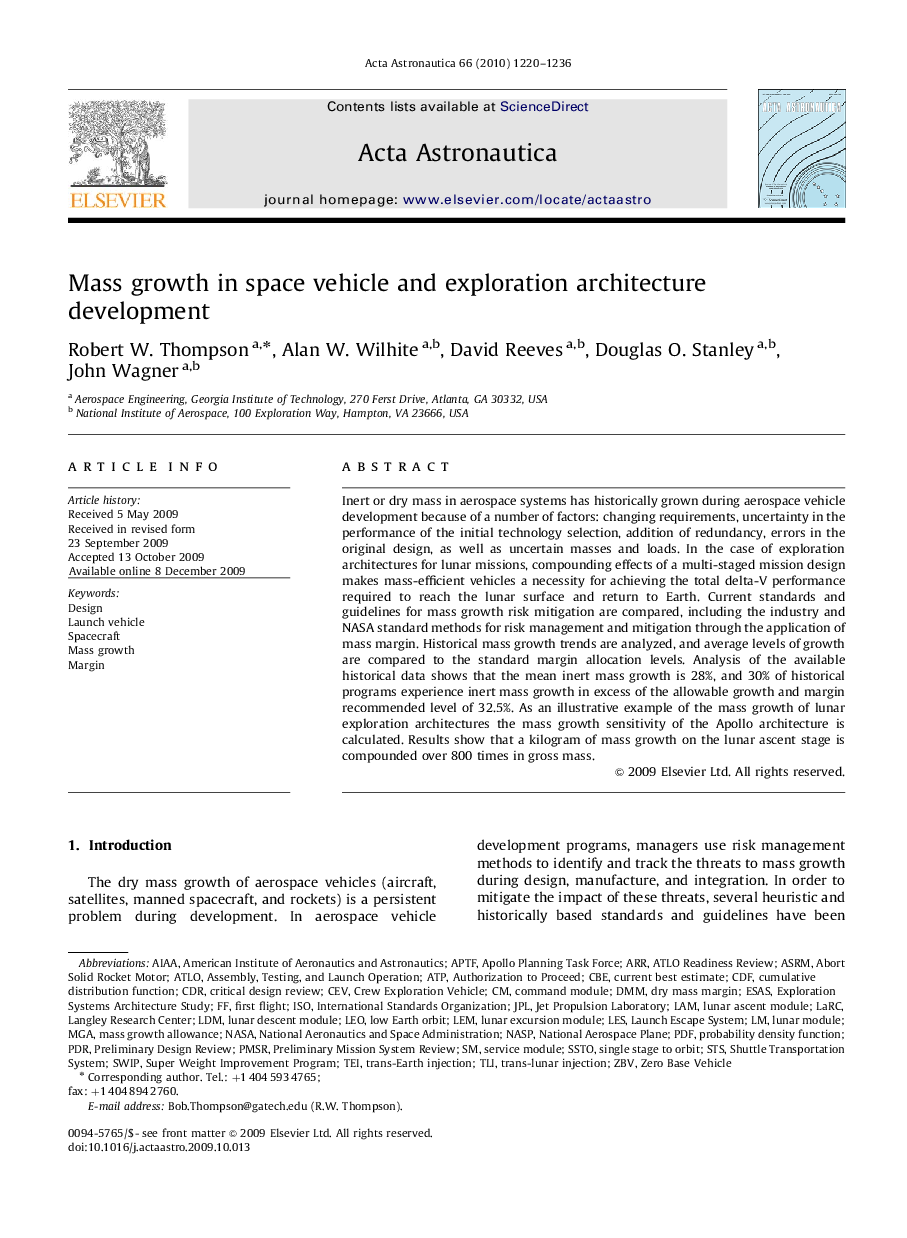| کد مقاله | کد نشریه | سال انتشار | مقاله انگلیسی | نسخه تمام متن |
|---|---|---|---|---|
| 1715739 | 1519999 | 2010 | 17 صفحه PDF | دانلود رایگان |
عنوان انگلیسی مقاله ISI
Mass growth in space vehicle and exploration architecture development
دانلود مقاله + سفارش ترجمه
دانلود مقاله ISI انگلیسی
رایگان برای ایرانیان
کلمات کلیدی
LDMASRMCEVTLILARCPDRMGAESASCBELEOSTSCDRARRDMMTEICDFNASPJpLLESATP - آدنوزین تری فسفات یا ATPJet Propulsion Laboratory - آزمایشگاه جابجایی پروانهISO - ایزوCumulative Distribution Function - تابع توزیع تجمعیProbability density function - تابع چگالی احتمالInternational Standards Organization - سازمان بین المللی استانداردnational aeronautics and space administration - سازمان ملی هوانوردی و فضاییDesign - طراحیspacecraft - فضاپیمایLAM - لامMargin - لبهLem - لمLow earth orbit - مدار زمین کمNASA - ناساlaunch vehicle - وسیله نقلیه پرتابPdf - پی دی اف
موضوعات مرتبط
مهندسی و علوم پایه
سایر رشته های مهندسی
مهندسی هوافضا
پیش نمایش صفحه اول مقاله

چکیده انگلیسی
Inert or dry mass in aerospace systems has historically grown during aerospace vehicle development because of a number of factors: changing requirements, uncertainty in the performance of the initial technology selection, addition of redundancy, errors in the original design, as well as uncertain masses and loads. In the case of exploration architectures for lunar missions, compounding effects of a multi-staged mission design makes mass-efficient vehicles a necessity for achieving the total delta-V performance required to reach the lunar surface and return to Earth. Current standards and guidelines for mass growth risk mitigation are compared, including the industry and NASA standard methods for risk management and mitigation through the application of mass margin. Historical mass growth trends are analyzed, and average levels of growth are compared to the standard margin allocation levels. Analysis of the available historical data shows that the mean inert mass growth is 28%, and 30% of historical programs experience inert mass growth in excess of the allowable growth and margin recommended level of 32.5%. As an illustrative example of the mass growth of lunar exploration architectures the mass growth sensitivity of the Apollo architecture is calculated. Results show that a kilogram of mass growth on the lunar ascent stage is compounded over 800 times in gross mass.
ناشر
Database: Elsevier - ScienceDirect (ساینس دایرکت)
Journal: Acta Astronautica - Volume 66, Issues 7â8, AprilâMay 2010, Pages 1220-1236
Journal: Acta Astronautica - Volume 66, Issues 7â8, AprilâMay 2010, Pages 1220-1236
نویسندگان
Robert W. Thompson, Alan W. Wilhite, David Reeves, Douglas O. Stanley, John Wagner,